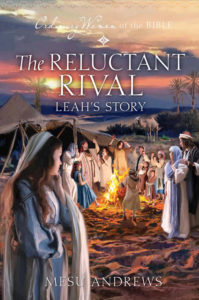Fact Or Fiction—The Reluctant Rival: Leah’s Story
TRUTH:
Do you know the story of Jacob, Leah, and Rachel? Jacob flees from his twin brother Esau, who he’s cheated out of his birthright and covenant blessing, when he deceived their blind father Isaac. When Jacob arrives in Haran, he meets Rachel, and it’s love at first sight. Since he has nothing to pay for a bride price, he works for her father, Laban, for seven years as a shepherd to “earn” her hand in marriage, but on the wedding night, Laban deceives the deceiver and gives Jacob his older daughter, Leah—who is described as having “weak eyes”—instead of beautiful Rachel. (Genesis 27:1-29:18)
FACTS:
“Weak eyes” could mean a lot of things. Several Jewish resources (mentioned below) believe it meant Leah had been betrothed to Esau as a newborn, and when she discovered as a young girl that Esau was such a louse, she cried so much that it damaged her eyes. Ummm . . . I’m not convinced by that explanation—though I LOVED the idea that Leah and Esau might have been betrothed (notice “might have been” though found in historical facts section)!
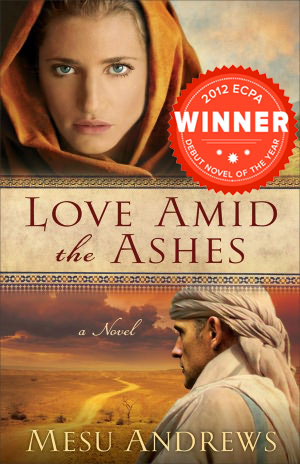 Another fact that fueled my fiction was a commentary that suggested Leah’s eyes were considered weak or unlovely because they were light in color. You’ll see this same characteristic reflected on the cover of my debut novel, Love Amid the Ashes. (It’s not a mistake in casting a cover model!)
Another fact that fueled my fiction was a commentary that suggested Leah’s eyes were considered weak or unlovely because they were light in color. You’ll see this same characteristic reflected on the cover of my debut novel, Love Amid the Ashes. (It’s not a mistake in casting a cover model!)
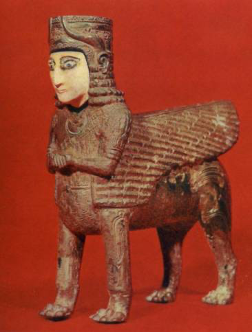 Remember, Laban and his daughters were from Haran, in the land of Padan Aram, farther northeast of Canaan and interspersed with the peoples of other kingdoms and empires. When I researched the mixture of cultures, I found some people of the Mitanni Empire and ancient Armenians may have had blonde-haired and blue-eyed features. Granted, the prevalent features would have been dark hair and dark eyes, but even ancient Armenian art showed blue eyes as a characteristic that was to be recorded in history and preserved for future generations (as seen in the Urartu blue-eyed sphinx: https://www.armenian-history.com/history/ancient/kingom-urartu-van). In Haran—and in Laban’s opinion—perhaps blue eyes were all the more reason to be rid of his older daughter.
Remember, Laban and his daughters were from Haran, in the land of Padan Aram, farther northeast of Canaan and interspersed with the peoples of other kingdoms and empires. When I researched the mixture of cultures, I found some people of the Mitanni Empire and ancient Armenians may have had blonde-haired and blue-eyed features. Granted, the prevalent features would have been dark hair and dark eyes, but even ancient Armenian art showed blue eyes as a characteristic that was to be recorded in history and preserved for future generations (as seen in the Urartu blue-eyed sphinx: https://www.armenian-history.com/history/ancient/kingom-urartu-van). In Haran—and in Laban’s opinion—perhaps blue eyes were all the more reason to be rid of his older daughter.
Would you call it Fact or Fiction?
FACTS:
I look to Jewish literature for research on all my books (Midrash, Talmud, Pseudepigrapha, etc.), but when I began research for The Reluctant Rival: Leah’s Story (TRRLS), I found ALL those resources in a single pdf! It made that part of research so much quicker and easier. Divided into sections, this single resource offered information from various sources on: Leah’s eyes, the wedding, Leah’s first four kids, her handmaid’s children, the mandrakes, and much more. Here’s the link to that all-inclusive pdf if you’re interested: https://jps.org/wp-content/uploads/2015/05/Rabow-Syllabus-and-Sourcebook.pdf.
TRUTH:
TRRLS opens with Leah and her sister Rachel fighting over a mandrake root. Why? Because as Genesis 30:14-16 tells us, Leah’s son, Reuben, found a mandrake in the field during wheat harvest, and barren Rachel thought it had magical properties to help her conceive. She was willing to let her older sister, Leah, sleep with their mutual husband if she could have that mandrake.
FACT:
Mandrakes have been used for thousands of years in a variety of medicinal purposes, but a host of magical and superstitious traditions have followed them into current day.
 The roots’ shape often resembles human form, sometimes even bearing “arms” and “legs.” Folks tending toward the fantastical say the roots “scream” when pulled from the ground, protesting their separation from the earth. More experienced gardeners remind us that many large roots “squeak” when harvested.
The roots’ shape often resembles human form, sometimes even bearing “arms” and “legs.” Folks tending toward the fantastical say the roots “scream” when pulled from the ground, protesting their separation from the earth. More experienced gardeners remind us that many large roots “squeak” when harvested.
Mandrake root, as an herb, was used for many things but most commonly a narcotic. A painkiller that allows the patient to remain conscious, it was also added to beer and wine in the ancient world to give an extra “boost” at feasts and celebrations.
But it was the mandrake fruit that Rachel wanted. The “apples” appear in the fall during harvest season, and some say when ingested (eaten or added to hot liquid), they can affect hormone levels.
Would you call it Fact or Fiction?
TRUTH:
There is no mention of a tent between the time Jacob left his father’s camp in Beersheba (Genesis 28:10) until he returned, twenty years later, and was overtaken in his journey by his angry father-in-law, Laban (Genesis 31:25).
FACT:
Since I’ve never visited Haran, Padan Aram (Haran is a modern-day city in Turkey), I researched online and in libraries. Travel blogs are especially fun to explore because we get some really personal perspectives on these ancient places. Such was the case in the ancient city of Haran with its conical houses!
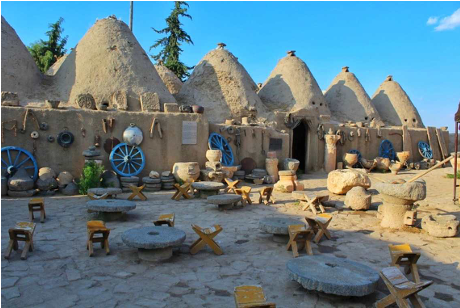 I must confess here. At the time I wrote TRRLS, I was under the impression that these “beehive houses” had been the style of dwelling place in Haran since biblical times. Unfortunately, when I went back to get my info for this webpage, I re-read my research and found this little sentence:
I must confess here. At the time I wrote TRRLS, I was under the impression that these “beehive houses” had been the style of dwelling place in Haran since biblical times. Unfortunately, when I went back to get my info for this webpage, I re-read my research and found this little sentence:
“They have been around from the last 300 years.”
Very disappointing. This means what I thought was FACT is actually FICTION, but it helped provide at least a structure for the city Jacob would have lived in rather than his tent-dwelling lifestyle in Isaac’s Beersheba camp. To read more about the interesting history of Haran on the travel blog I mentioned, CLICK HERE.
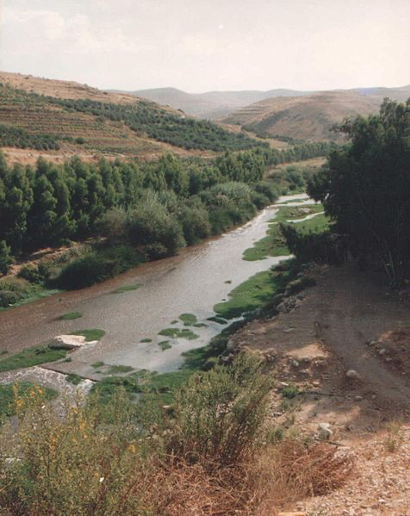
TRUTH:
Jacob wrestled with God, who came in the form of a man, at the Jabbok River crossing. (Genesis 32:22-32)
FACT:
The Jabbok River today is called the Zarqa River and is the second largest tributary of the Jordan River (https://en.wikipedia.org/wiki/Zarqa_River), which runs north and south through Israel. The Jabbok itself runs east/west, so Jacob would have crossed from its southern bank to the north and the next day met Esau (Genesis 33).
Imagine traversing that terrain with Jacob’s large caravan. Not only did he have four wives, eleven sons, and a daughter to move, he also fled Laban’s estate “with all he had” (Genesis 31:21). Jacob had amassed servants and livestock—enough to present Esau with a substantial gift and still have “two camps” that would sustain him and his family in their new home. How long would it take Jacob and his caravan to travel from Haran to his various destinations?
FACT and FICTION:
When I wrote my first book, I found it necessary to “guess-ti-mate” travel times and found this handy guide.
- Walking and/or donkeys – 20 miles/day
- Camels
- Bactrian (2-humped) – 30 miles/day
- Dromedary (1-humped) – 150 miles/day
- Horses – 25-35 miles/day
So, while guess-ti-mating Jacob’s travels, I used these approximate numbers:
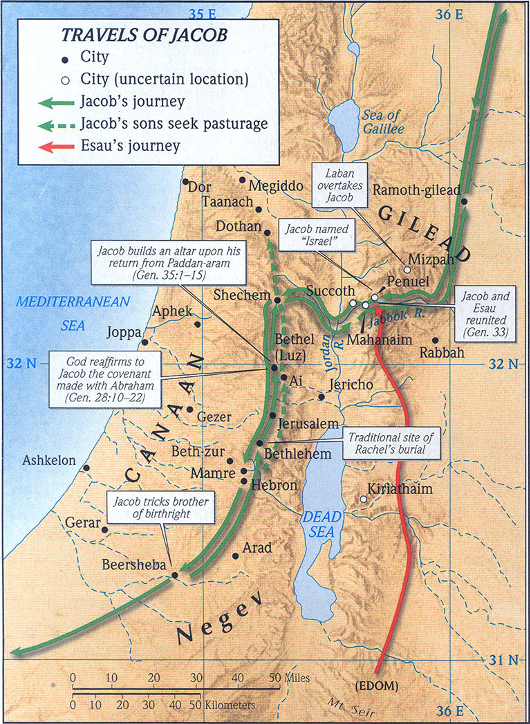
Brand, Chad, Charles Draper, Archie England, Steve Bond, E. Ray Clendenen, Trent C. Butler, and Bill Latta, eds. Holman Illustrated Bible Dictionary. Nashville, TN: Holman Bible Publishers, 2003.
DISTANCES BETWEEN Haran and:
- MIZPAH – 380 MI
- PENUEL – +10 MI
- MAHANAIM – +2 MI
- CROSS JABBOK – NORTH
- SUCCOTH – +3 MI (north shore of Jabbok)
- SHECHEM – +15 MI (west side of mtn range)
- BETHEL – +10 MI (also west side of mtn range)
- BEERSHEBA – +30 MI (TL = 450 mi to Haran)
15 mi/day with large caravan (women & children; livestock w/nursing lambs/calves)
TIME FROM Haran to:
- MIZPAH – (380 MI) – 26 days
- MAHANAIM – +10 MI – 1 day
- PENUEL – +2 MI – 1 morning
- CROSS JABBOK – NORTH
- SUCCOTH – +3 MI (north shore of Jabbok) – 1 morning
- SHECHEM – +15 MI (west side of mtn range) – 1 day
- BETHEL – +10 MI (also west side of mtn range) – 1 day
- BEERSHEBA – +30 MI (TL = 450 mi to Haran) – 2 days
I hope you’ve enjoyed this FACT OR FICTION page for The Reluctant Rival: Leah’s Story. If you haven’t yet read the book and would like to purchase your copy or learn more about it, CLICK HERE. And if you’re curious about the Truth that awaits you in God’s Word, check out Genesis 25:19-50:26. Happy reading!
*CLICK HERE for a downloadable list of all my books.

